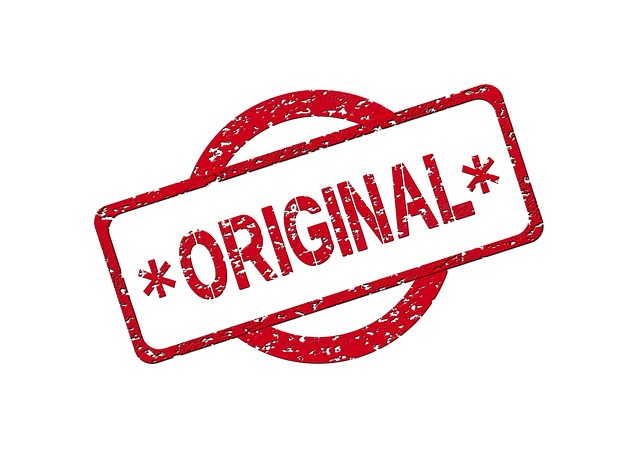Have you ever found yourself questioning which titles should be italicized when writing? We’ve all been there, trying to navigate the endless rules and exceptions that govern the world of typography. But fear not, for today we bring you the ultimate guide to this intriguing conundrum. Whether you’re crafting an essay, article, or even a book, knowing how to correctly format titles can make all the difference in enhancing your written work’s professionalism and clarity. So, buckle up and join us on this enlightening journey as we demystify the secrets behind italicized titles and uncover the ins and outs of this often overlooked aspect of writing.
Contents
- The Basics: Understanding Italics in Writing
- When to Use Italics for Titles: A Common Dilemma
- Types of Titles
- Formatting Guidelines: Style Manuals to the Rescue
- for subheadings, and for further subdivisions help you achieve this effortlessly. 3. Emphasize important details: Utilize the power of bold to emphasize key terms or phrases. This will catch your reader’s attention and help them focus on crucial information within your text. 4. Bullet points for clarity: When presenting a series of related points or items, opt for bulleted lists. This format increases visual appeal, aids in comprehension, and encourages a quick scanability of information. 5. Citations made easy: To avoid plagiarism and give proper credit to your sources, consult the appropriate citation style recommended by your style manual. Whether it’s APA, MLA, or Chicago, adhere to the rules and guidelines to ensure accurate and consistent citation within your work. Remember, by adhering to the guidelines provided by style manuals, you can tackle formatting roadblocks with ease, creating professional and polished documents that will impress readers and elevate your written work to new heights. So dive into the valuable world of style manuals and make your formatting fears a thing of the past! Book Titles: Proper Italics Usage
- Movies, TV Shows, and Plays: Navigating Titles in Italics
- What About Articles, Essays, and Short Stories?
- Brand Names and Product Titles: To Italicize or Not?
- Exceptions to the Rule: Handy Tips for Tricky Cases
- Frequently Asked Questions
- In Retrospect
The Basics: Understanding Italics in Writing
Italics play a crucial role in enhancing the visual presentation and clarity of written content. When used correctly, they can provide emphasis, indicate foreign words or phrases, and differentiate titles of works. Here’s a breakdown of how to effectively utilize italics in your writing:
1. Emphasis: Italics are commonly used to emphasize specific words or phrases, adding weight and significance to them. By setting them apart from the surrounding text, italics draw readers’ attention and create emphasis, making those words stand out. For example, instead of saying, “I really love that song,” you can say, “I really love that song.” The emphasis on “love” conveys a stronger sentiment.
2. Foreign Words or Phrases: When incorporating foreign terms into your writing, italics are used to indicate that these words or phrases are not in the language of the main text. This helps the reader understand that the word is being used from another language and may not have a direct translation. For instance, if you were describing a French dish in an English article, you might write, “The hors d’oeuvres were absolutely delicious.” By italicizing “hors d’oeuvres,” you indicate that it is a non-English term.
When to Use Italics for Titles: A Common Dilemma
Types of Titles
There are numerous types of titles that can appear in writing, including book titles, movie titles, poem titles, article titles, and more. When it comes to deciding whether to use italics for these titles, it can often be a common dilemma. However, understanding the guidelines can help you make the right choice.
Full-Length Works
When it comes to full-length works such as books, movies, or plays, it is generally recommended to italicize the title. This helps to differentiate the complete work from other elements within the text. Additionally, if you are writing within a formal setting, such as in academic papers or articles, following this guideline is crucial for maintaining consistency and adhering to standard writing conventions.
Shorter Works
On the other hand, shorter works like articles, chapters, or poems are typically placed in quotation marks instead of being italicized. Using quotation marks helps to indicate that the title is part of a larger work. This is especially important when referencing shorter pieces within a longer body of text or when citing sources. For example, when writing an essay, you would italicize the book containing multiple chapters, but put the individual chapter title or article title in quotation marks.
Understanding when to use italics versus quotation marks for titles is important in order to accurately convey the intended meaning and provide clarity to your readers. By following these guidelines, you can navigate the common dilemma of whether to use italics for titles and ensure your writing maintains a polished and professional appearance.
Formatting Guidelines: Style Manuals to the Rescue
For those who find themselves swimming in a sea of confusion when it comes to formatting, fear not! Style manuals are here to rescue you from the abyss of uncertainty. These invaluable resources provide a comprehensive set of guidelines, facilitating consistency and clarity in your written work. To ensure your documents are well-structured and professional, follow these essential formatting tips:
1. Consistency is key: Remember to use consistent formatting throughout your document. Whether it’s punctuations, headings, or citation styles, maintaining uniformity enhances readability and conveys a sense of professionalism.
2. Headings hierarchy: Arrange your headings hierarchically to create a logical flow within your document. HTML tags like
for main headings,
In the world of literature, italics play a crucial role in emphasizing book titles and creating a visually appealing format. Knowing when to properly use italics can make a significant difference in the professionalism and readability of your work. Here are some helpful guidelines to ensure the correct usage of italics for book titles:
1. **Complete Works**: When referencing a complete book, such as a novel, memoir, or collection of poems, it is important to italicize the title. For example, if you are discussing F. Scott Fitzgerald’s masterpiece, *The Great Gatsby*, remember to italicize the title to distinguish it from the rest of the text.
2. **Partial Works**: On the other hand, when referring to a specific chapter, short story, or essay within a larger collection or anthology, use double quotation marks instead of italics. For instance, if you are analyzing Toni Morrison’s novel, *Beloved*, and want to highlight a specific chapter, like “Rememory,” enclose the chapter title in quotation marks to indicate it is a smaller work within the larger context.
Remember that these guidelines also apply when writing articles, essays, or reviews that discuss various books. Mastering the art of proper italics usage not only enhances your writing’s clarity but also showcases your attention to detail, making your work appear more polished and professional.
When it comes to distinguishing titles of movies, TV shows, and plays, the use of italics is crucial. Italicizing these titles is a common practice in writing, as it helps to differentiate them from the surrounding text and emphasizes their importance. By following this simple formatting rule, you can ensure that your readers easily recognize the titles and understand the references you make.
To properly navigate titles in italics, remember the following guidelines:
1. Movies: Titles of full-length movies should always be italicized. For example, “The Shawshank Redemption” is an iconic film that captivates audiences with its powerful storytelling.
2. TV Shows: When referring to a TV show, it is important to italicize the title. For instance, “Friends” remains a beloved sitcom that continues to entertain viewers of all ages.
Additionally, it is essential to know how to handle titles within titles. If the title of a movie, TV show, or play is mentioned within your text, it should still be italicized, but you should place it within quotation marks. For example, “In the popular TV show ‘Stranger Things,’ the characters embark on thrilling adventures in the 1980s.” This distinction helps readers understand the hierarchy of the titles mentioned. By adhering to these guidelines, your writing will convey professionalism and clarity when discussing movies, TV shows, and plays.
What About Articles, Essays, and Short Stories?
Articles, essays, and short stories are three distinct forms of written expression that offer unique opportunities for writers to convey their thoughts, ideas, and stories to their intended audience.
An article is a piece of writing that focuses on presenting factual information, analysis, or opinion on a particular topic. Whether it’s a news article, a feature article, or an informative blog post, articles aim to provide readers with valuable insights and knowledge. They typically follow a structured format that includes an introduction, body paragraphs, and a conclusion. Articles may also include subheadings, bullet points, and images to enhance readability.
On the other hand, an essay is a more formal and thoughtful piece of writing that explores a specific topic in depth. Essays often present the author’s personal perspective or argument supported by evidence and logical reasoning. They may provide a critical analysis, compare and contrast different viewpoints, or present a persuasive argument. Typically, essays are structured into an introduction, body paragraphs, and a conclusion. They follow a distinct thesis statement, which acts as the central idea guiding the reader through the essay.
Short stories are fictional narratives that focus on a brief incident, a character, or an event. Unlike articles and essays, short stories are a form of creative writing that allows authors to immerse readers in a fictional world of characters and plotlines. These concise narratives can range from thought-provoking to entertaining, often leaving readers with a lasting impact or message. Short stories don’t require extensive background information and are usually composed with a well-defined beginning, middle, and end, highlighting the significance of storytelling skills within a limited space.
Brand Names and Product Titles: To Italicize or Not?
When it comes to using brand names and product titles in your writing, one important aspect to consider is whether to italicize them or not. The use of italics can help distinguish these names and titles from the rest of the text, but it is not always necessary or prescribed. Here are a few factors to consider when deciding whether to use italics for brand names and product titles:
1. Consistency: Maintaining consistency throughout your content is crucial for a professional and polished look. If you decide to italicize brand names and product titles, make sure to do so consistently throughout your writing.
2. Brand guidelines: Some brands have specific guidelines for how their names should be presented in writing. It is worth checking the brand’s style guide or website to see if they prefer their name to be italicized or represented in a specific way.
On the other hand, there are situations when italics may not be necessary or preferred:
1. Widely recognized brands: Brands that are well-known and easily identifiable may not require italics. Consider the popularity and recognition of the brand before deciding to italicize it.
2. Clarity and readability: Using italics excessively can be visually distracting and negatively impact the readability of your text. If your content contains multiple brand names or product titles, consider using bold formatting instead of italics to avoid overwhelming the reader.
In conclusion, the decision to italicize brand names and product titles ultimately depends on the context, branding preferences, and readability of your writing. Consistency and adherence to brand guidelines play a key role, but it’s also important to consider audience recognition and maintain clarity in your text. Remember, using bold formatting can also be an effective alternative to italics when emphasizing these names and titles. So, choose your formatting approach wisely to create a visually appealing and coherent piece of content.
Exceptions to the Rule: Handy Tips for Tricky Cases
In the world of rules and norms, there are always exceptions that leave us scratching our heads. When it comes to tricky cases, it’s important to be prepared and armed with knowledge. Here are some handy tips to help you navigate those exception-filled waters:
- Think Outside the Box: Tricky cases often require creative solutions. Break free from the conventional and explore alternative approaches. Embracing flexibility will enable you to find unexpected answers.
- Consult the Experts: When facing an exceptional scenario, seeking advice from specialists can be a game-changer. Whether it’s a legal matter or a complex technical problem, tapping into the expertise of those who specialize in the field can provide invaluable insights and guidance.
- Double-Check the Details: Tricky cases are notorious for their subtle nuances. In these situations, paying attention to the smallest details can make all the difference. Take your time to thoroughly analyze the case, ensuring that no stone is left unturned.
Don’t let tricky cases discourage you. Remember, exceptions exist to challenge us and push the boundaries of our understanding. By thinking creatively, seeking advice, and paying attention to the details, you’ll be better equipped to tackle even the trickiest of cases!
Frequently Asked Questions
Q: When should I use italics when writing?
A: Italics are used to emphasize or highlight specific words, phrases, or titles in written text.
Q: What is the purpose of italicizing titles?
A: Italicizing titles helps to distinguish them from regular text and brings attention to their importance or significance.
Q: Which titles are typically italicized in writing?
A: Titles of longer works such as books, magazines, newspapers, films, plays, TV shows, music albums, paintings, and sculptures are generally italicized.
Q: Are there any exceptions to italicizing book titles?
A: Yes, shorter works like chapters or sections of books, poems, short stories, articles, and essays are usually enclosed in quotation marks, not italicized.
Q: How about italicizing titles of websites, blogs, or web pages?
A: In general, website and blog names are not italicized. However, if you are referring to a specific page or article within a website, that title should be italicized.
Q: What about titles of songs or individual music tracks?
A: Song titles, along with individual tracks from albums, are typically enclosed in quotation marks, rather than being italicized.
Q: Should I italicize the names of video games?
A: Yes, names of video games are typically italicized. It helps differentiate the title from the surrounding text.
Q: Do I need to italicize scientific or research papers?
A: Italicization of scientific or research papers is not necessary. However, if you are referring to a specific paper or article within a larger publication, then that title should be italicized.
Q: Is it necessary to italicize foreign words or phrases?
A: Italicizing foreign words or phrases helps to distinguish them from the rest of the text. This convention allows readers to recognize that the word or phrase is in a different language.
Q: Are headlines or titles of newspaper articles italicized?
A: No, newspaper article titles or headlines are usually not italicized. They are generally written in bold or enclosed in quotation marks.
Q: What is the key takeaway regarding italics in writing titles?
A: Remember, italics are used to set certain titles apart from regular text. Longer works such as books, movies, and artworks are typically italicized, while shorter works such as articles, essays, and poem titles go in quotation marks. Following these guidelines will clarify your writing and help readers navigate your text smoothly.
In Retrospect
In conclusion, knowing which titles to italicize in writing is essential for clarity and consistency. This guide provides a comprehensive explanation for writers to navigate this often confusing aspect of formatting.









